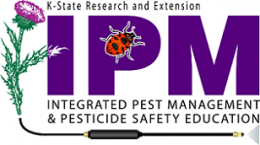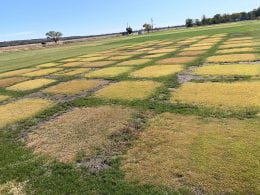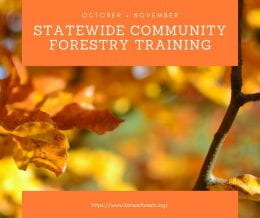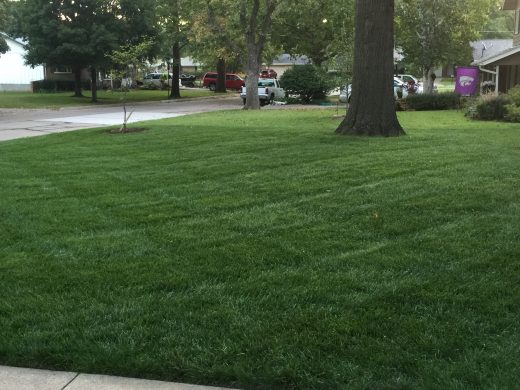By: Brooke Garcia
It seems as through Kansas only knows how to jump, skip, or hop into a new season. We had a small taste of Fall weather, and it is now feeling a lot more like winter. The landscape has most likely dramatically changed in the last few weeks. If you overseeded your lawn, you’re hopefully enjoying the green color of the freshly germinated seed. Several garden weeds are dying back. Mums are flowering and showing off their color. Maples, as well as other fall foliage, are showing off their beautiful fall color as well. Visit the Horticulture e-Newsletter for more information on some of the reasons these trees have color.

While some of our favorite landscape items are full of life and color, there are a handful of plants in the landscape that have entered dormancy or have died back. Not only have they lost their leaves or blooms, they may be ready for cutbacks. If you had annuals planted in the landscape, they may have recently died back from the recent freezing temperatures we experienced throughout Kansas. They will need to be removed from the landscape. Fall is an important time to perform a garden clean-up. For more specific information on perennial cutbacks, visit the Horticulture e-Newsletter for their recent post.
Want to know what to do with all of those leaves? Here is a previous blog post about Mow-mulching fall leaves.
It is also not too late to plant Spring-Flowering Bulbs. As long as the soil
temperatures >40 degrees Fahrenheit, the spring bulbs should continue to develop. For more information, read the article “There is Still Time to Plant Spring Flowering Bulbs” on the Horticulture e-Newsletter blog.
After you’ve completed cutbacks and bulb planting, mulching is an important task to be completed in the Fall. Not only does it “freshen” up landscape beds, it helps to retain soil moisture and protect the roots of plantings for the winter months ahead.
In addition to all of these Fall tasks, it is also important to consider general clean-up tasks that include:
- Power-washing exterior of buildings and/or structures, as well as driveways or sidewalks
- Container/planter re-fresh: Remove dead plantings from containers or planters. Empty used soil out of containers and store containers in a warmer/dry place. This can reduce cracking and general wear/tear.
- Remove dead weeds from landscape
- Remove fallen leaves/debris within landscape, and add to compost bin
- Unscrew hose, and place hose-bib covers over hose bibs in preparation for freezing temperatures
- Cover or store exterior furniture. Store cushions, umbrellas, etc.
This may seem like a lot of fall tasks to consider, but they are all important tasks to keep your landscape(s) looking beautiful during the fall and winter seasons. Hopefully this helps you develop your Fall clean-up program or builds onto an existing clean-up program for your landscape and garden.
Don’t forget to follow our Turfgrass Facebook Page for blog updates and other timely information.










